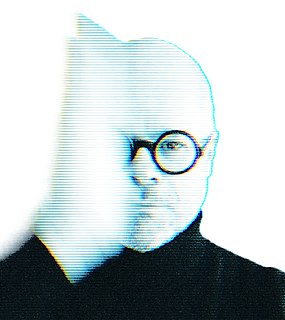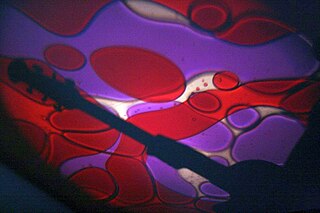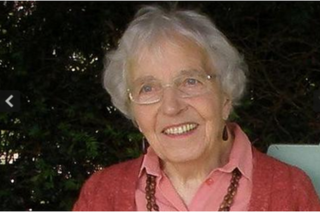
The Lumière brothers, Auguste Marie Louis Nicolas Lumière and Louis Jean Lumière, were French manufacturers of photography equipment, best known for their Cinématographe motion picture system and the short films they produced between 1895 and 1905, which places them among the earliest filmmakers.

Westminster Abbey, formally titled the Collegiate Church of Saint Peter at Westminster, is a large, mainly Gothic abbey church in the City of Westminster, London, England, just to the west of the Palace of Westminster. It is one of the United Kingdom's most notable religious buildings and a burial site for English and, later, British monarchs. Since the coronation of William the Conqueror in 1066, all coronations of English and British monarchs have occurred in Westminster Abbey. Sixteen royal weddings have occurred at the abbey since 1100.

Gothic architecture is an architectural style that was prevalent in Europe from the late 12th to the 16th century, during the High and Late Middle Ages, surviving into the 17th and 18th centuries in some areas. It evolved from Romanesque architecture and was succeeded by Renaissance architecture. It originated in the Île-de-France and Picardy regions of northern France. The style at the time was sometimes known as opus Francigenum ; the term Gothic was first applied contemptuously during the later Renaissance, by those ambitious to revive the architecture of classical antiquity.

The Cathedral and Metropolitical Church of Saint Peter in York, commonly known as York Minster, is the cathedral of York, North Yorkshire, England, and is one of the largest of its kind in Northern Europe. The minster is the seat of the Archbishop of York, the third-highest office of the Church of England, and is the mother church for the Diocese of York and the Province of York. It is run by a dean and chapter, under the Dean of York. The title "minster" is attributed to churches established in the Anglo-Saxon period as missionary teaching churches, and serves now as an honorific title; the word Metropolitical in the formal name refers to the Archbishop of York's role as the Metropolitan bishop of the Province of York. Services in the minster are sometimes regarded as on the High Church or Anglo-Catholic end of the Anglican continuum.

Gloucester Cathedral, formally the Cathedral Church of St Peter and the Holy and Indivisible Trinity, in Gloucester, England, stands in the north of the city near the River Severn. It originated in 678 or 679 with the foundation of an abbey dedicated to Saint Peter.

The Empire, Leicester Square is a cinema currently operated by Cineworld on the north side of Leicester Square, London.

Son et lumière, or a sound and light show, is a form of nighttime entertainment that is usually presented in an outdoor venue of historic significance.

In French Gothic architecture, Rayonnant is the period from about the mid-13th century to mid-14th century. It was characterized by a shift away from the High Gothic search for increasingly large size toward more spatial unity, refined decoration, and additional and larger windows, which filled the space with light. Prominent features of Rayonnant include the large rose window, more windows in the upper-level clerestory; the reduction of the importance of the transept; and larger openings on the ground floor to establish greater communication between the central vessel and the side aisles. Interior decoration increased, and the decorative motifs spread to the outside, to the facade and the buttresses utilizing great scale and spatial rationalism towards a greater concern for two-dimensional surfaces and the repetition of decorative motifs at different scales. The use of tracery gradually spread from the stained glass windows to areas of stonework, and to architectural features such as gables.

Martin Firrell is a British public artist.

Jules Carpentier was a French engineer and inventor.
Keiichi Tahara was a Japanese photographer.

Liquid light shows are a form of light art that surfaced in the early 1960s as accompaniment to electronic music and avant-garde theatre performances. They were later adapted for performances of rock or psychedelic music.

Cinimod Studio is a London-based experiential agency involved in various architecture and lighting design projects. Projects undertaken typically involve a wide mix of media and technologies, and often involve interactive design.

Light art or The Art of Light is generally referring to a visual art form in which (physical) light is the main, if not sole medium of creation. Uses of the term differ drastically in incongruence; definitions, if existing, vary in several aspects. Since light is the medium for visual perception, this way all visual art could be considered Art of Light absurdly enough; but most pieces of art are valid and coherent without reflecting on this basic perceptual fact. Some approaches on these grounds also include into the Art of Light those forms of art where light is not any medium contributing to the artwork, but is depicted. Thus luminism may also refer to the Art of Light in the above sense, its previous usage point to painterly styles: either as an other label for the Caravaggisti in the baroque, or 19th and 20th centuries, fundamentally impressionist schools. Concerning light as a medium of art, historically the Art of Light is confined to the use of artificial light in artworks. This culminates in the paradoxical situation in which machines producing light environments are not the artworks themselves, but the artwork is how they modulate their environments, based on the conventionally taken-for granted, thus solely reflected fact that light is what constitutes our environment.
John Bacon (1777–1859), also known as John Bacon the Younger, or Junior, to distinguish him from his equally famous father, was an English sculptor.

Koert Vermeulen Principal Designer, Founder and Managing Partner of ACTLD, is a Belgium-based lighting and visual designer who creates lighting, art, set, video and content designs for public events worldwide. Since 1995, his work has broadened from entertainment and architectural lighting design to large scale live events, ceremonies, international expos and cultural festivals.

Projection mapping, similar to video mapping and spatial augmented reality, is a projection technique used to turn objects, often irregularly shaped, into display surfaces for video projection. The objects may be complex industrial landscapes, such as buildings, small indoor objects, or theatrical stages. Using specialized software, a two- or three-dimensional object is spatially mapped on the virtual program which mimics the real environment it is to be projected on. The software can then interact with a projector to fit any desired image onto the surface of that object. The technique is used by artists and advertisers who can add extra dimensions, optical illusions, and notions of movement onto previously static objects. The video is commonly combined with or triggered by audio to create an audiovisual narrative. In recent years the technique has also been widely used in the context of cultural heritage, as it has proved to be an excellent edutainment tool.

Vivid Sydney is an annual festival of light, music and ideas, held in Sydney, Australia. It includes outdoor immersive light installations and projections, performances by local and international musicians, and an ideas exchange forum featuring public talks and debates with leading creative thinkers.

Corinne Marie Gillian Bennett MBE was an English conservation architect. She worked on the restoration and preservation of many historic buildings in England throughout her career, including Winchester Cathedral and the Royal Pavilion. She worked for the National Trust in the 1980s and became the first national cathedrals architect for English Heritage in 1991.

Lumiere is the UK's largest light festival. The festival, produced by London-based creative company Artichoke, debuted in Durham in 2009. The festival was part inspired by the Fête des lumières in Lyon. Hosted in winter time, and free to attend, the festival typically comprises a number of light art-installations, as well as illuminating iconic buildings and locations. The festival takes place biennially in November in Durham, and since 2013 has occasionally toured to other locations, both reusing popular illuminations from Durham and creating new bespoke installations.






















